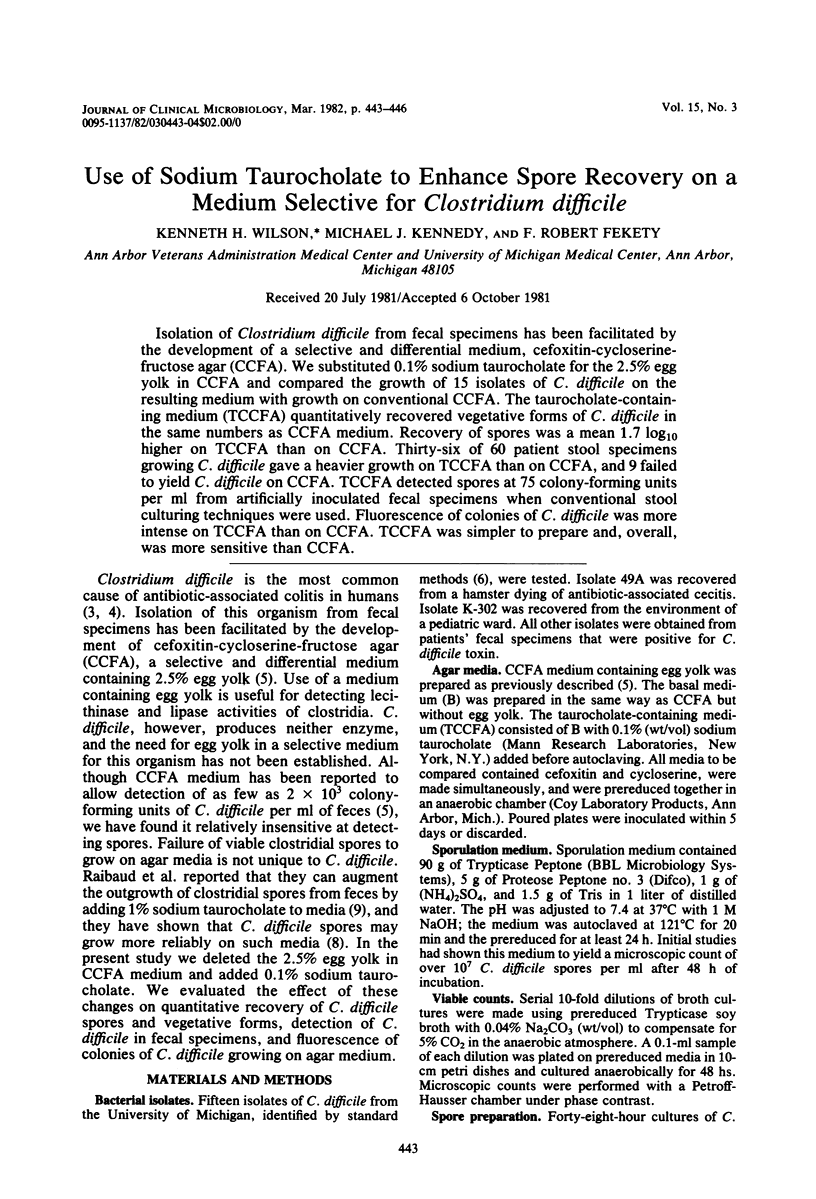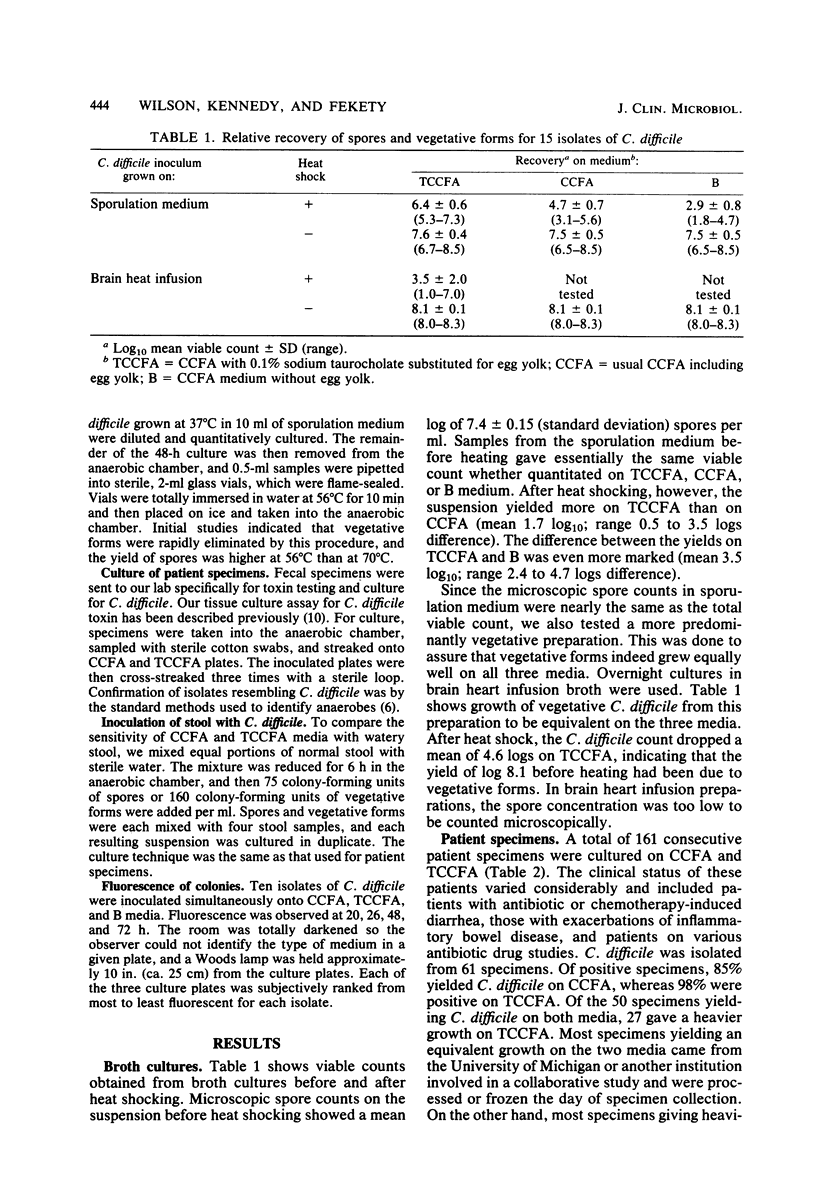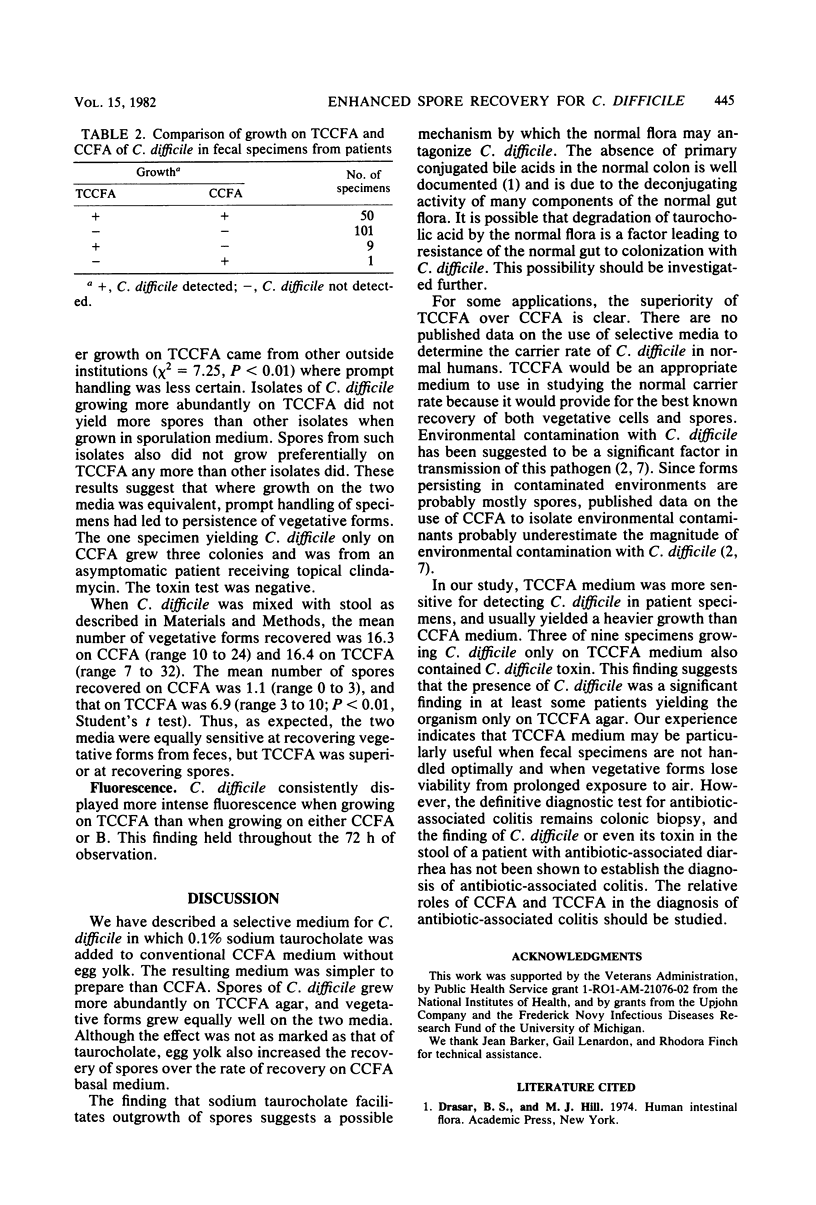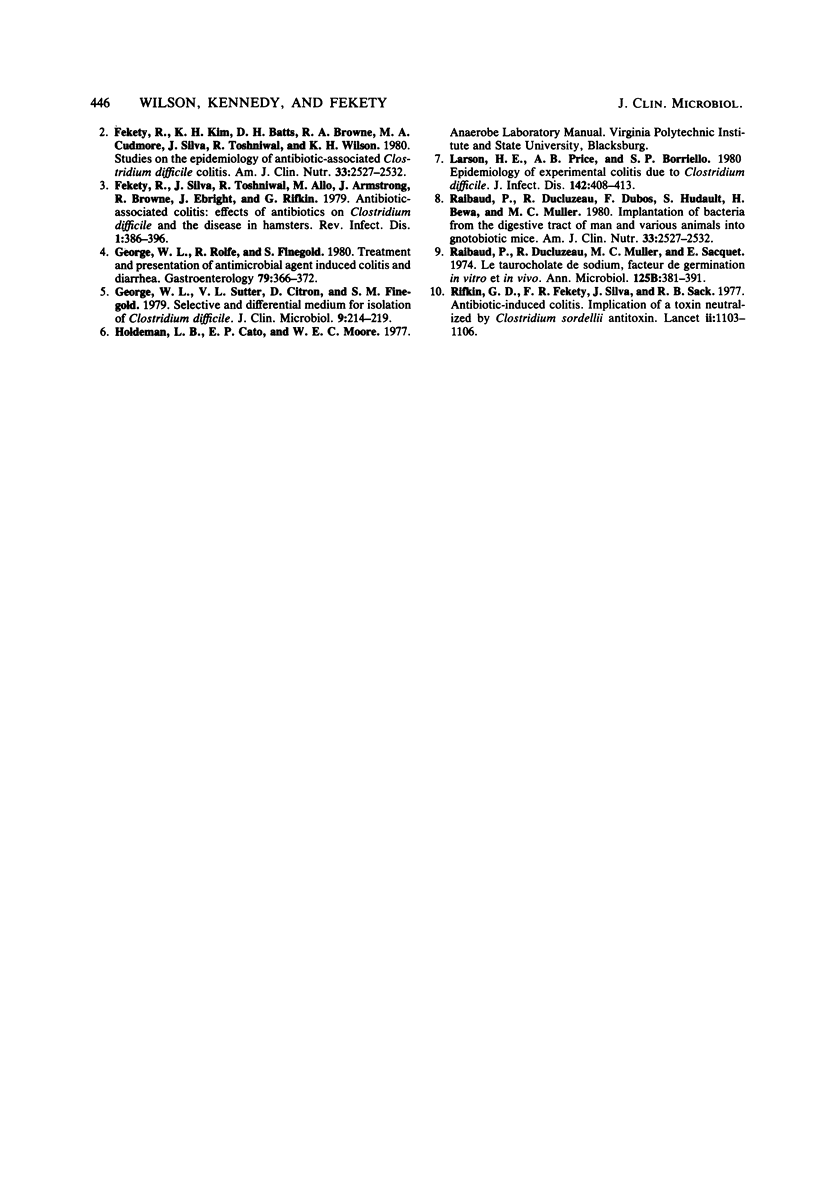Abstract
Isolation of Clostridium difficile from fecal specimens has been facilitated by the development of a selective and differential medium, cefoxitin-cycloserinefructose agar (CCFA). We substituted 0.1% sodium taurocholate for the 2.5% egg yolk in CCFA and compared the growth of 15 isolates of C. difficile on the resulting medium with growth on conventional CCFA. The taurocholate-containing medium (TCCFA) quantitatively recovered vegetative forms of C. difficile in the same numbers as CCFA medium. Recovery of spores was a mean 1.7 log(10) higher on TCCFA than on CCFA. Thirty-six of 60 patient stool specimens growing C. difficile gave a heavier growth on TCCFA than on CCFA, and 9 failed to yield C. difficile on CCFA. TCCFA detected spores of 75 colony-forming units per ml from artificially inoculated fecal specimens when conventional stool culturing techniques were used. Fluorescence of colonies of C. difficile was more intense on TCCFA than on CCFA. TCCFA was simpler to prepare and, overall, was more sensitive than CCFA.
Full text
PDF



Selected References
These references are in PubMed. This may not be the complete list of references from this article.
- Fekety R., Kim K. H., Batts D. H., Browne R. A., Cudmore M. A., Silva J., Jr, Toshniwal R., Wilson K. H. Studies on the epidemiology of antibiotic-associated Clostridium difficile colitis. Am J Clin Nutr. 1980 Nov;33(11 Suppl):2527–2532. doi: 10.1093/ajcn/33.11.2527. [DOI] [PubMed] [Google Scholar]
- Fekety R., Kim K. H., Batts D. H., Browne R. A., Cudmore M. A., Silva J., Jr, Toshniwal R., Wilson K. H. Studies on the epidemiology of antibiotic-associated Clostridium difficile colitis. Am J Clin Nutr. 1980 Nov;33(11 Suppl):2527–2532. doi: 10.1093/ajcn/33.11.2527. [DOI] [PubMed] [Google Scholar]
- Fekety R., Silva J., Toshniwal R., Allo M., Armstrong J., Browne R., Ebright J., Rifkin G. Antibiotic-associated colitis: effects of antibiotics on Clostridium difficile and the disease in hamsters. Rev Infect Dis. 1979 Mar-Apr;1(2):386–397. doi: 10.1093/clinids/1.2.386. [DOI] [PubMed] [Google Scholar]
- George W. L., Rolfe R. D., Finegold S. M. Treatment and prevention of antimicrobial agent-induced colitis and diarrhae. Gastroenterology. 1980 Aug;79(2):366–372. [PubMed] [Google Scholar]
- George W. L., Sutter V. L., Citron D., Finegold S. M. Selective and differential medium for isolation of Clostridium difficile. J Clin Microbiol. 1979 Feb;9(2):214–219. doi: 10.1128/jcm.9.2.214-219.1979. [DOI] [PMC free article] [PubMed] [Google Scholar]
- Larson H. E., Price A. B., Borriello S. P. Epidemiology of experimental enterocecitis due to Clostridium difficile. J Infect Dis. 1980 Sep;142(3):408–413. doi: 10.1093/infdis/142.3.408. [DOI] [PubMed] [Google Scholar]
- Railbaud P., Ducluzeau R., Muller M. C., Sacquet E. Le taurocholate de sodium, facteur de germination in vitro et in vivo, dans le tube digestif d'animaux "gnotoxéniques", pour les spores de certaines bactéries anaérobies strictes isolées de fèces humaines et animales. Ann Microbiol (Paris) 1974 Oct-Nov;125B(3):381–391. [PubMed] [Google Scholar]
- Rifkin G. D., Fekety F. R., Silva J., Jr Antibiotic-induced colitis implication of a toxin neutralised by Clostridium sordellii antitoxin. Lancet. 1977 Nov 26;2(8048):1103–1106. doi: 10.1016/s0140-6736(77)90547-5. [DOI] [PubMed] [Google Scholar]


